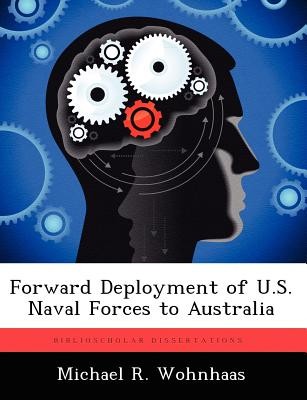
- We will send in 10–14 business days.
- Author: Michael R Wohnhaas
- Publisher: BiblioScholar
- ISBN-10: 1249410231
- ISBN-13: 9781249410232
- Format: 18.9 x 24.6 x 0.7 cm, softcover
- Language: English
- SAVE -10% with code: EXTRA
Forward Deployment of U.S. Naval Forces to Australia (e-book) (used book) | bookbook.eu
Reviews
Description
Per the 2006 Quadrennial Defense Review (QDR), the U.S. Navy intends to increase its presence in the Pacific Ocean. Unfortunately, the size of the Pacific means that U.S-based ships spend a smaller proportion of each deployment available in theater. Forward-Deployed Naval Forces (FDNF) represent an attractive alternative, but current overseas bases cannot easily accommodate more ships. Australia, a strong U.S. ally in the heart of the theater, offers a number of potential advantages including numerous suitable ports, an educated English-speaking population, and the opportunity for strengthening diplomatic ties and military interoperability. Calculations of transit times and distances reveals potential savings in both transit costs and ship constructions (FDNF can "do more with less") that might repay the required initial investment in basing. Other possible benefits of increasing the FDNF footprint include reassurance of regional allies, a counter-balance to growing Chinese influence, and a chilling effect on terrorism, piracy, and drug trafficking. Potential drawbacks include initial investment requirements, an Australian backlash against the alliance, or a perceived threat to Chinese or North Korean interests. Nevertheless, Australia, America, and other Pacific Rim nations might accept, and could benefit from, such basing.
EXTRA 10 % discount with code: EXTRA
The promotion ends in 16d.06:03:06
The discount code is valid when purchasing from 10 €. Discounts do not stack.
- Author: Michael R Wohnhaas
- Publisher: BiblioScholar
- ISBN-10: 1249410231
- ISBN-13: 9781249410232
- Format: 18.9 x 24.6 x 0.7 cm, softcover
- Language: English English
Per the 2006 Quadrennial Defense Review (QDR), the U.S. Navy intends to increase its presence in the Pacific Ocean. Unfortunately, the size of the Pacific means that U.S-based ships spend a smaller proportion of each deployment available in theater. Forward-Deployed Naval Forces (FDNF) represent an attractive alternative, but current overseas bases cannot easily accommodate more ships. Australia, a strong U.S. ally in the heart of the theater, offers a number of potential advantages including numerous suitable ports, an educated English-speaking population, and the opportunity for strengthening diplomatic ties and military interoperability. Calculations of transit times and distances reveals potential savings in both transit costs and ship constructions (FDNF can "do more with less") that might repay the required initial investment in basing. Other possible benefits of increasing the FDNF footprint include reassurance of regional allies, a counter-balance to growing Chinese influence, and a chilling effect on terrorism, piracy, and drug trafficking. Potential drawbacks include initial investment requirements, an Australian backlash against the alliance, or a perceived threat to Chinese or North Korean interests. Nevertheless, Australia, America, and other Pacific Rim nations might accept, and could benefit from, such basing.


Reviews